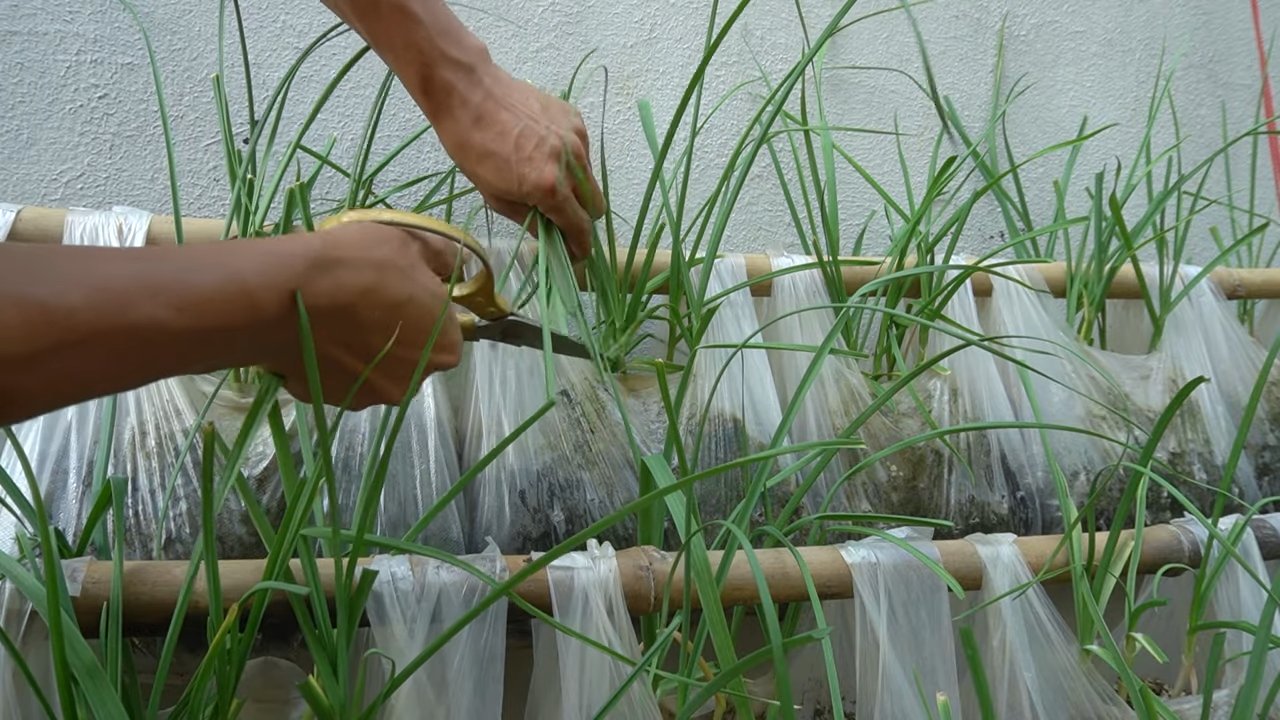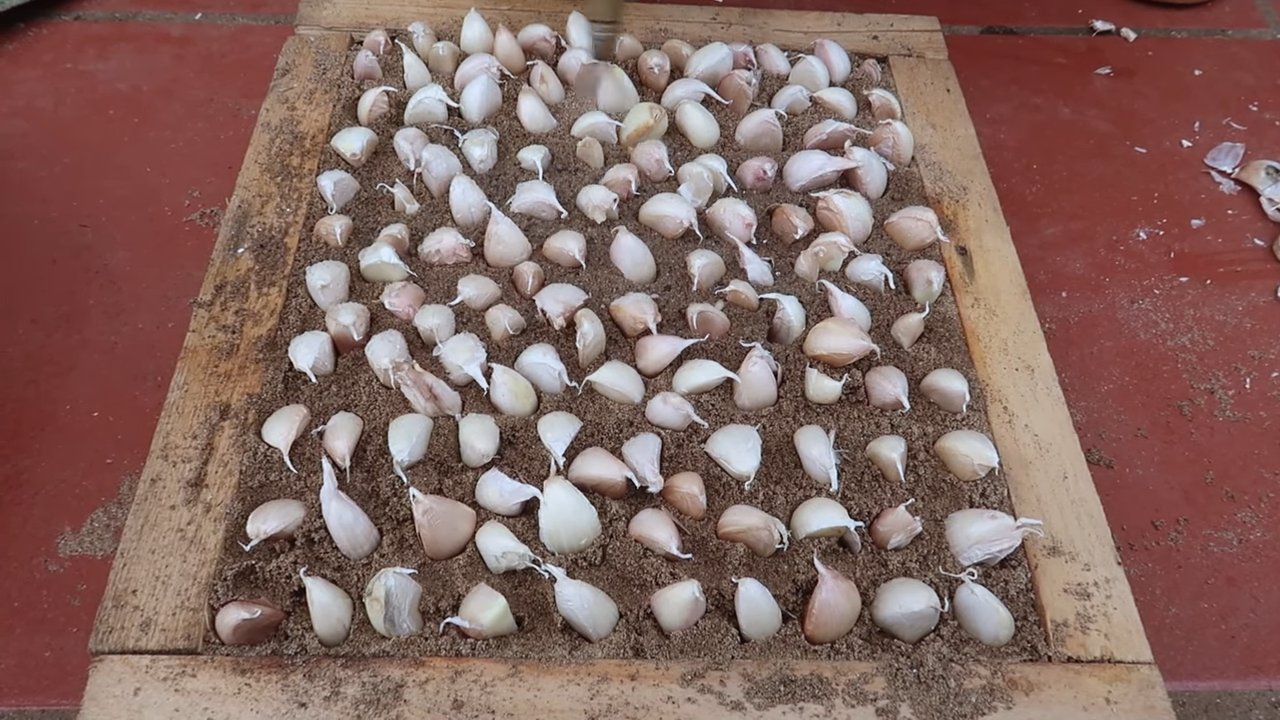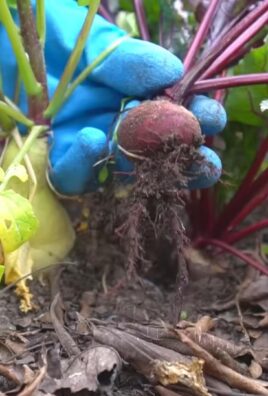Growing Potatoes No Garden? Absolutely! Imagine harvesting a bounty of fresh, earthy potatoes right from your own home, even if you don’t have a traditional garden. Sounds impossible? Think again! This DIY guide unlocks the secrets to cultivating delicious potatoes in containers, bags, or even buckets – proving that a green thumb isn’t limited by square footage.
For centuries, potatoes have been a staple food source, playing a vital role in cultures worldwide. From the Andean highlands where they originated to the Irish potato famine that shaped history, this humble tuber has a rich and complex past. Now, you can participate in this legacy, bringing the joy of potato cultivation into your own home, regardless of your living situation.
Let’s face it, fresh produce from the grocery store can be expensive and sometimes lacks the vibrant flavor of homegrown vegetables. That’s where this DIY trick comes in. Growing potatoes no garden is a fantastic way to save money, enjoy healthier meals, and connect with nature, all from the comfort of your apartment balcony or sunny patio. I’m excited to share these simple, effective methods that will have you harvesting your own spuds in no time. Get ready to ditch the store-bought potatoes and embrace the satisfaction of growing your own!

Kartoffeln anbauen ohne Garten: Dein DIY-Guide für den Kartoffelturm
Hey du! Hast du keinen Garten, aber trotzdem Lust auf frische, selbst angebaute Kartoffeln? Kein Problem! Ich zeige dir, wie du mit einem einfachen Kartoffelturm auch auf dem Balkon, der Terrasse oder sogar in der Garage eine reiche Ernte erzielen kannst. Es ist einfacher, als du denkst, und macht richtig Spaß!
Was du brauchst:
* Einen großen Behälter: Ein alter Mülleimer (aus Plastik!), eine Wäschewanne, ein großer Pflanzkübel oder sogar ein selbstgebauter Turm aus Holzpaletten eignen sich hervorragend. Wichtig ist, dass er mindestens 60 cm hoch ist und einen Durchmesser von mindestens 40 cm hat. Je größer, desto mehr Kartoffeln kannst du ernten!
* Saatkartoffeln: Kaufe zertifizierte Saatkartoffeln im Fachhandel. Sie sind speziell gezüchtet und garantieren eine gute Ernte. Achte auf Sorten, die früh reifen, wenn du in einer Region mit kurzen Sommern wohnst.
* Erde: Eine Mischung aus Gartenerde, Kompost und Sand ist ideal. Der Kompost sorgt für Nährstoffe, der Sand für eine gute Drainage. Du kannst auch spezielle Kartoffelerde kaufen.
* Stroh oder Heu: Das Stroh oder Heu dient dazu, die Kartoffeln vor Licht zu schützen und die Feuchtigkeit zu speichern.
* Gießkanne oder Schlauch: Zum regelmäßigen Gießen.
* Optional: Dünger (organisch oder mineralisch), um das Wachstum zu fördern.
Schritt-für-Schritt-Anleitung: So baust du deinen Kartoffelturm
1. Den Behälter vorbereiten:
* Reinige den Behälter gründlich, falls er gebraucht ist.
* Bohre Löcher in den Boden des Behälters, um Staunässe zu vermeiden. Das ist super wichtig, damit die Kartoffeln nicht faulen!
* Wenn du einen Behälter aus Holzpaletten baust, achte darauf, dass er stabil ist und keine scharfen Kanten hat.
2. Die erste Schicht Erde einfüllen:
* Fülle eine etwa 20 cm hohe Schicht Erde in den Behälter.
* Drücke die Erde leicht an.
3. Die Saatkartoffeln vorbereiten:
* Wenn die Saatkartoffeln noch keine Triebe haben, kannst du sie vorkeimen lassen. Lege sie dazu an einen hellen, kühlen Ort (ca. 15-20°C). Nach ein paar Tagen sollten sich kleine, grüne Triebe bilden. Das beschleunigt das Wachstum.
* Große Saatkartoffeln kannst du halbieren oder vierteln, achte aber darauf, dass jedes Stück mindestens ein “Auge” (Triebansatz) hat. Lasse die Schnittflächen vor dem Einpflanzen etwas antrocknen, um Fäulnis zu vermeiden.
4. Die Saatkartoffeln einpflanzen:
* Lege die Saatkartoffeln mit den Trieben nach oben auf die Erdschicht.
* Achte darauf, dass die Kartoffeln genügend Abstand zueinander haben (ca. 20-30 cm).
* Bedecke die Kartoffeln mit einer etwa 10 cm hohen Schicht Erde.
5. Gießen und warten:
* Gieße die Erde vorsichtig an, sodass sie feucht, aber nicht nass ist.
* Stelle den Behälter an einen sonnigen Standort. Kartoffeln lieben die Sonne!
Die “Anhäufel”-Phase: So vermehrst du deine Ernte
Das “Anhäufeln” ist der Schlüssel zum Erfolg beim Kartoffelturmanbau. Es fördert die Bildung neuer Kartoffeln an den Stängeln.
1. Die ersten Triebe:
* Sobald die Kartoffelpflanzen etwa 20 cm hoch gewachsen sind, ist es Zeit für das erste Anhäufeln.
2. Anhäufeln:
* Fülle Erde, Kompost oder eine Mischung aus beidem um die Stängel der Kartoffelpflanzen.
* Lass nur die obersten Blätter herausschauen.
* Gieße die Erde nach dem Anhäufeln gut an.
3. Wiederholen:
* Wiederhole das Anhäufeln alle paar Wochen, sobald die Pflanzen wieder etwa 20 cm gewachsen sind.
* Fahre fort, bis der Behälter fast voll ist.
* Du kannst auch Stroh oder Heu verwenden, um die Stängel zu bedecken. Das hilft, die Feuchtigkeit zu speichern und die Kartoffeln vor Licht zu schützen.
Pflege und Gießen: Damit deine Kartoffeln prächtig gedeihen
* Gießen: Gieße die Kartoffeln regelmäßig, besonders während trockener Perioden. Die Erde sollte immer feucht, aber nicht nass sein. Vermeide Staunässe!
* Düngen: Dünge die Kartoffeln alle paar Wochen mit einem organischen oder mineralischen Dünger. Achte auf einen Dünger mit einem hohen Kaliumgehalt, da Kalium wichtig für die Knollenbildung ist.
* Schädlinge und Krankheiten: Kontrolliere die Pflanzen regelmäßig auf Schädlinge und Krankheiten. Kartoffelkäfer sind häufige Schädlinge. Du kannst sie absammeln oder mit einem biologischen Insektizid bekämpfen. Bei Pilzkrankheiten wie Kraut- und Braunfäule solltest du befallene Blätter entfernen und die Pflanzen mit einem Fungizid behandeln.
* Sonnenschutz: An sehr heißen Tagen kann es sinnvoll sein, den Behälter etwas zu beschatten, um die Pflanzen vor Verbrennungen zu schützen.
Die Ernte: Der Lohn deiner Mühe
* Der richtige Zeitpunkt: Die Kartoffeln sind erntereif, wenn die Blätter der Pflanzen gelb werden und absterben. Das ist in der Regel nach etwa 80-120 Tagen der Fall, je nach Sorte und Witterung.
* Die Ernte:
* Stoppe das Gießen ein paar Tage vor der Ernte.
* Kippe den Behälter vorsichtig um oder grabe die Kartoffeln mit einer Grabegabel aus.
* Sei vorsichtig, um die Kartoffeln nicht zu beschädigen.
* Sammle alle Kartoffeln ein, auch die kleinen.
* Lagerung: Lagere die Kartoffeln an einem kühlen, dunklen und trockenen Ort. Ein Keller oder eine Speisekammer sind ideal. Vermeide es, die Kartoffeln im Kühlschrank zu lagern, da sie dort süß werden können.
Zusätzliche Tipps für eine reiche Ernte:
* Sortenwahl: Wähle Kartoffelsorten, die für den Anbau im Kübel geeignet sind. Frühkartoffeln sind oft eine gute Wahl, da sie schneller reifen.
* Bodenverbesserung: Mische dem Boden etwas Hornspäne oder Knochenmehl bei, um die Nährstoffversorgung zu verbessern.
* Mulchen: Bedecke die Erdoberfläche mit einer Schicht Mulch (z.B. Stroh oder Rasenschnitt), um die Feuchtigkeit zu speichern und Unkraut zu unterdrücken.
* Regelmäßige Kontrolle: Kontrolliere die Pflanzen regelmäßig auf Schädlinge und Krankheiten und greife bei Bedarf frühzeitig ein.
* Geduld: Hab Geduld! Es dauert eine Weile, bis die Kartoffeln gewachsen sind. Aber die Mühe lohnt sich!
Häufige Fehler vermeiden:
* Staunässe: Achte unbedingt auf eine gute Drainage, um Staunässe zu vermeiden.
* Zu wenig Sonne: Kartoffeln brauchen viel Sonne, um gut zu wachsen.
* Falsche Erde: Verwende keine reine Gartenerde, da diese oft zu schwer ist. Mische sie mit Kompost und Sand.
* Zu wenig Gießen: Gieße die Kartoffeln regelmäßig, besonders während trockener Perioden.
* Zu späte Ernte: Ernte die Kartoffeln rechtzeitig, bevor sie zu groß werden und platzen.
Mit diesen Tipps und Tricks steht deiner eigenen Kartoffelernte auf dem Balkon nichts mehr im Wege! Viel Spaß beim Gärtnern! Ich bin sicher, du wirst begeistert sein, wie einfach es ist, deine eigenen Kartoffeln anzubauen. Und der Geschmack von

Conclusion
So, there you have it! Growing potatoes without a garden is not only possible, it’s surprisingly rewarding and accessible to almost anyone. We’ve walked through the simple steps, highlighted the key considerations, and hopefully, dispelled any doubts you might have had about your ability to cultivate your own spuds, even if you’re living in an apartment or have limited outdoor space.
This method, using containers or grow bags, offers a fantastic alternative to traditional gardening. It’s a game-changer for urban dwellers, renters, or anyone who simply wants to enjoy the satisfaction of harvesting their own food without the commitment of a large garden plot. The beauty of this DIY trick lies in its adaptability. You can tailor the size of your container to fit your available space, and you can even experiment with different potato varieties to discover your personal favorites.
Think about the possibilities! Imagine serving up a dish featuring freshly dug, homegrown potatoes that you nurtured from seed to table. The flavor difference between store-bought and homegrown is undeniable – a richer, earthier taste that will elevate your meals to a whole new level. Plus, there’s the added bonus of knowing exactly where your food comes from and how it was grown.
Why is this a must-try? Because it’s empowering. It connects you to the natural world in a tangible way. It’s a fun and educational project for the whole family. And most importantly, it provides you with delicious, nutritious food that you can be proud of.
Variations to consider:
* Potato Varieties: Don’t limit yourself to just one type of potato. Experiment with different varieties like Yukon Gold, Red Pontiac, or even fingerling potatoes. Each variety offers a unique flavor and texture profile.
* Container Size: Adjust the size of your container based on the space you have available and the number of seed potatoes you want to plant. Larger containers will generally yield more potatoes.
* Soil Amendments: Enhance your potting mix with compost, worm castings, or other organic amendments to provide your potatoes with the nutrients they need to thrive.
* Vertical Gardening: For those with extremely limited space, consider using a potato tower or other vertical gardening system to maximize your yield.
* Companion Planting: Plant companion plants like marigolds or basil around your potato plants to deter pests and attract beneficial insects.
We wholeheartedly encourage you to give this DIY potato growing method a try. It’s a simple, satisfying, and sustainable way to enjoy fresh, homegrown potatoes, regardless of your living situation. Don’t be afraid to experiment, adapt, and learn along the way. Gardening is a journey, and every experience, whether successful or not, is a valuable lesson.
Once you’ve harvested your first crop of homegrown potatoes, we’d love to hear about your experience! Share your photos, tips, and stories in the comments section below. Let’s build a community of container potato growers and inspire others to embrace the joy of growing their own food. Happy growing!
Frequently Asked Questions (FAQ)
What kind of container should I use for growing potatoes?
The ideal container for growing potatoes should be large enough to accommodate the growing root system and allow for hilling. A container that is at least 20 inches in diameter and 24 inches deep is generally recommended. You can use plastic pots, grow bags, or even repurposed containers like trash cans or laundry baskets, as long as they have drainage holes. Grow bags are particularly popular because they are lightweight, breathable, and allow for good drainage.
What kind of soil should I use?
Potatoes need well-draining soil that is rich in organic matter. A good potting mix for potatoes should consist of a blend of peat moss, perlite, and compost. You can also add other amendments like worm castings or aged manure to further enrich the soil. Avoid using garden soil, as it can be too heavy and compact, which can hinder potato growth. The pH of the soil should be slightly acidic, ideally between 6.0 and 6.5.
How often should I water my potato plants?
Potato plants need consistent moisture, especially during tuber formation. Water your plants deeply whenever the top inch of soil feels dry to the touch. Avoid overwatering, as this can lead to root rot. The frequency of watering will depend on the weather conditions, the size of your container, and the type of soil you are using. In hot, dry weather, you may need to water your plants daily.
How much sunlight do potato plants need?
Potato plants need at least six hours of sunlight per day to thrive. Choose a location that receives full sun for the majority of the day. If you are growing your potatoes indoors, you may need to supplement with artificial lighting, such as grow lights.
How do I “hill” my potato plants?
Hilling is the process of adding more soil to the base of the potato plants as they grow. This encourages the plants to produce more tubers along the buried stem. Start hilling when the plants are about 6 inches tall. Add a few inches of soil around the base of the plants, burying the lower leaves. Repeat this process every few weeks as the plants grow, until the container is almost full.
When should I harvest my potatoes?
You can harvest “new potatoes” (small, immature potatoes) about 7-8 weeks after planting. These potatoes have thin skins and a delicate flavor. For mature potatoes, wait until the plants have flowered and the foliage starts to die back. This usually takes about 10-12 weeks. To harvest, carefully dig around the base of the plant and lift the potatoes out of the soil.
What are some common pests and diseases that affect potato plants?
Some common pests that can affect potato plants include aphids, potato beetles, and flea beetles. Diseases that can affect potato plants include early blight, late blight, and potato scab. To prevent pests and diseases, choose disease-resistant varieties, practice good sanitation, and monitor your plants regularly. If you notice any signs of pests or diseases, take action promptly to control them. Organic pest control methods, such as insecticidal soap or neem oil, can be effective for controlling many common pests.
Can I grow potatoes from store-bought potatoes?
While you can technically grow potatoes from store-bought potatoes, it’s generally not recommended. Store-bought potatoes may have been treated with chemicals to prevent sprouting, and they may also carry diseases. It’s best to use certified seed potatoes, which are specifically grown for planting and are guaranteed to be disease-free.
How do I store my harvested potatoes?
Store your harvested potatoes in a cool, dark, and dry place. The ideal storage temperature is between 40 and 50 degrees Fahrenheit. Avoid storing potatoes near apples or onions, as these fruits and vegetables release ethylene gas, which can cause potatoes to sprout prematurely. Properly stored potatoes can last for several months.




Leave a Comment